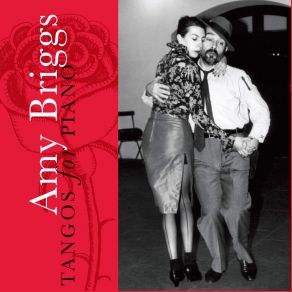Amy Briggs: Tangos for Piano
Download links and information about Amy Briggs: Tangos for Piano by Amy Briggs. This album was released in 2010 and it belongs to World Music genres. It contains 22 tracks with total duration of 01:08:48 minutes.

|
|
|---|---|
| Artist: | Amy Briggs |
| Release date: | 2010 |
| Genre: | World Music |
| Tracks: | 22 |
| Duration: | 01:08:48 |
| Buy it NOW at: | |
| Buy on iTunes $9.99 | |
Tracks
[Edit]| No. | Title | Length |
|---|---|---|
| 1. | Tango : Tango | 3:36 |
| 2. | Requests | 2:53 |
| 3. | Tango Variations on a Cantus | 3:19 |
| 4. | Zipper Tango | 3:21 |
| 5. | Tango? | 2:55 |
| 6. | Tango a Deux | 3:15 |
| 7. | Teeny Tango | 1:31 |
| 8. | Tango Beep Beep | 3:04 |
| 9. | Steptangle | 3:11 |
| 10. | Tango Clandestino | 4:18 |
| 11. | Tandy's Tango | 3:04 |
| 12. | Tagrango | 1:43 |
| 13. | Astoria | 3:32 |
| 14. | Tangled in Smoke | 3:05 |
| 15. | Esperanza | 3:03 |
| 16. | Mango | 2:54 |
| 17. | Piglia | 3:38 |
| 18. | Fantango | 5:32 |
| 19. | Tango-Variations | 2:53 |
| 20. | Tango Si | 1:34 |
| 21. | Tangozilla | 2:37 |
| 22. | Escualo (arr. A. Briggs) | 3:50 |
Details
[Edit]Except for the Stravinsky Tango at the beginning and pianist Amy Briggs' transcription of Astor Piazzolla's Escualo at the end, this collection of tangos is all contemporary. Most of them come from a pair of sources: an all-tango concert mounted by Briggs at the University of California at Davis during the 2003-2004 academic year, involving tangos from several composers on the faculty there as well as other newly commissioned works, and a similar project undertaken in the 1980s and early '90s by late American pianist Yvar Mikhashoff. The result is probably more entertaining for lovers of contemporary music than for tango fans, for the basic rhythms of tango serve more as a general inspiration than as a restriction in most of the pieces. This said, the variety of ideas is impressive, and there's something very intriguing about watching each composer adapt the tango to his or her individual style. The project works well because the tango is such a protean thing: a collection of rhythms, to begin with, some heavily syncopated and some in which the syncopation is more a matter of grace notes. Some composers are naturals for the tango; hear the stomping, heavy, and entirely characteristic Steptangle by Frederic Rzewski. Others, such as Yu-Hui Chang, use the tango primarily as a source of atmosphere, and quite a few play off of and develop the tango rhythm, using or disturbing its motoric quality as a work proceeds. All the pieces are short, with only one clocking in at over five minutes, and none is either baffling or really oriented toward crossover. An intriguing item for anyone interested in the classical uses of popular dance rhythms.~James Manheim, Rovi